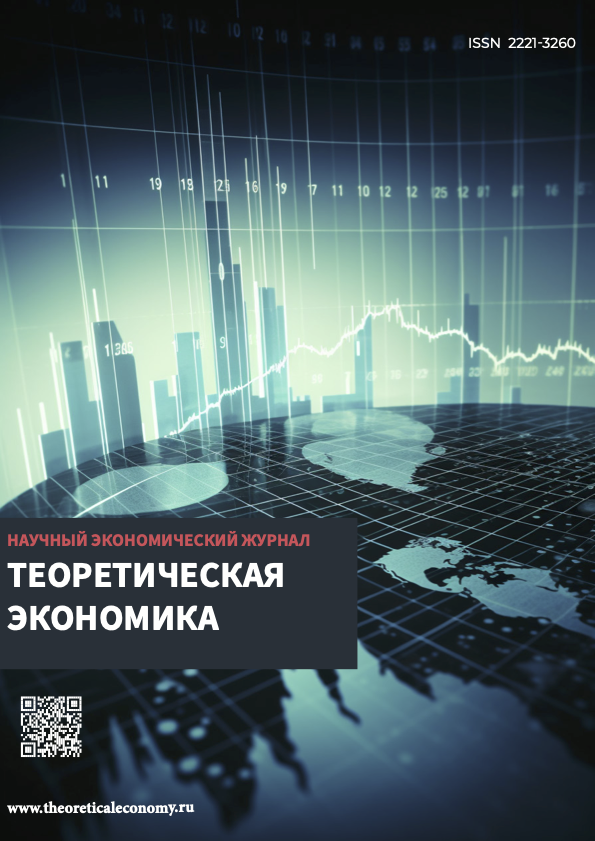Yaroslavl, Yaroslavl, Russian Federation
Yaroslavl, Yaroslavl, Russian Federation
Yaroslavl', Yaroslavl, Russian Federation
The relevance of the study is due to the fact that the EAEU, being at the initial stage of institutionalization, is already experiencing a number of negative effects of integration: the effect of inequality and the effect of resource spillover. The purpose of this study is to identify the impact of a number of negative effects of integration on the results of the EAEU functioning in the long term. As a result of the study it was found that the development of the Russian economy does not directly affect the rest of the EAEU countries – the GDP dynamics of the Union’s countries is multidirectional, there is no technological equalization between the countries. At the same time, indirectly, through changes in the volume of mutual trade and migration flows, we can say that both the effect of inequality and the effect of resource flows are clearly visible in the EAEU.
EAES, vzaimnaya torgovlya, sankcii, effekty integracii, ekonomicheskiy rost.
1. Oksinenko, V. G. (2023). The effect of creating a single EAEU labor market on the level of financial well-being of migrant households (exemplified by the Republic of Armenia). Population and Economics, 7(1), 21–32. https://doi.org/10.3897/popecon.7.e87175
2. Kot, V., Barsukova, A., Strielkowski, W., Krivko, M., & Smutka, L. (2023). International Trade in the Post-Soviet Space: Trends, Threats, and Prospects for the Internal Trade within the Eurasian Economic Union. Journal of Risk and Financial Management, 16(1). https://doi.org/10.3390/jrfm16010016
3. Vorontsova, N. A. (2023). The Current Issues of Trade Cooperation Between the EAEU and China. Moscow Journal of International Law, (1), 6–28. https://doi.org/10.24833/0869-0049-2023-1-6-28
4. Cieślik, A., & Gurshev, O. (2023). Trade policies in central Asia after EAEU enlargement and after Russian WTO accession: regionalism and integration into the world economy revisited. Eurasian Geography and Economics. https://doi.org/10.1080/15387216.2022.2162098
5. Galoyan, D., & Matevosyan, D. (2023). Dynamic Interrelationships Between EAEU Foreign Trade and Macroeconomic Indicators: An Empirical Analysis. Messenger of Armenian state university of economics, 50–59. https://doi.org/10.52174/1829-0280_2023.1-50
6. Shkvarya, L. V. (2023). Regional economic integration in the Eurasian Economic Union: theory, lessons from the past and new opportunities. UPRAVLENIE / MANAGEMENT (Russia), 11(2), 95–102. https://doi.org/10.26425/2309-3633-2023-11-2-95-102
7. Glazyev, S. Y., & Tkachuk, S. P. (2023). On the parameters of economic development in the EAEU until 2035. International Trade and Trade Policy, 9(1), 90–112. https://doi.org/10.21686/2410-7395-2023-1- 90-112
8. Galoyan, D., & Hovsepyan, M. (2023). Transmission Mechanisms of Economic Shocks in the Eurasian Economic Union. International Journal of Professional Business Review, 8(6), e02169. https://doi. org/10.26668/businessreview/2023.v8i6.2169
9. Evraziyskaya ekonomicheskaya komissiya. Statistika vneshney i vzaimnoy torgovli. [Elektron. resurs]. – Rezhim dostupa: https://eec.eaeunion.org/comission/department/dep_stat/tradestat/
10. Volgina, N.A. (2006). Mezhdunarodnaya ekonomika: Uchebnoe posobie. M.: Eksmo, 736.
11. World Bank DataBank. [Elektron. resurs]. – Rezhim dostupa: https://data.worldbank.org/ indicator/NY.GDP.MKTP.KD.ZG
12. Rosstat. Demografiya. [Elektron. resurs]. – Rezhim dostupa: https://rosstat.gov.ru/folder/12781
13. WIPO. Global innovation index. [Elektron. resurs]. – Rezhim dostupa: https://www.wipo.int/ edocs/pubdocs/en/wipo-pub-2000-2023-en-main-report-global-innovation-index-2023-16th-edition.pdf
 This work is licensed under Creative Commons Attribution-NonCommercial-NoDerivatives 4.0 International
This work is licensed under Creative Commons Attribution-NonCommercial-NoDerivatives 4.0 International











